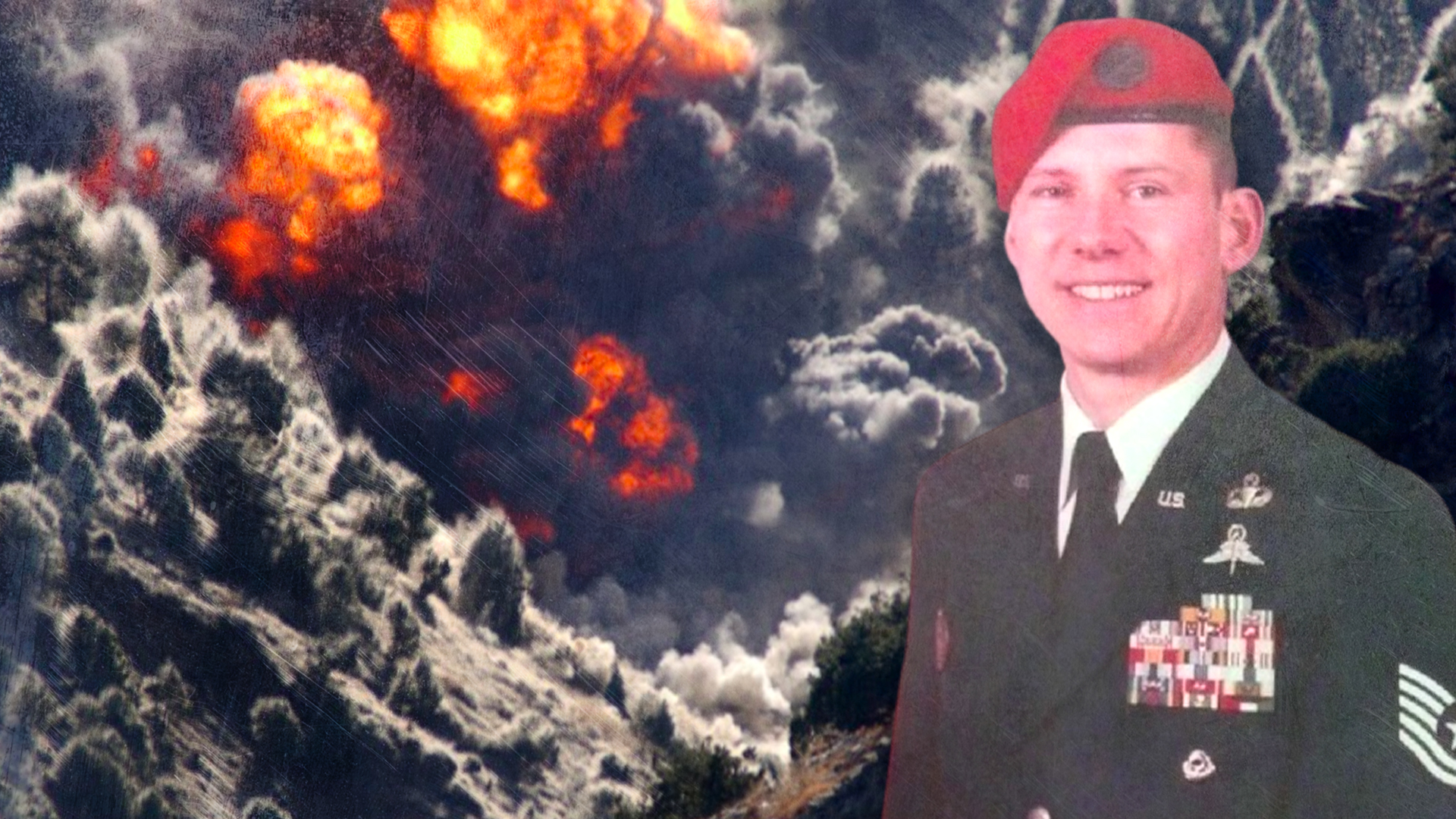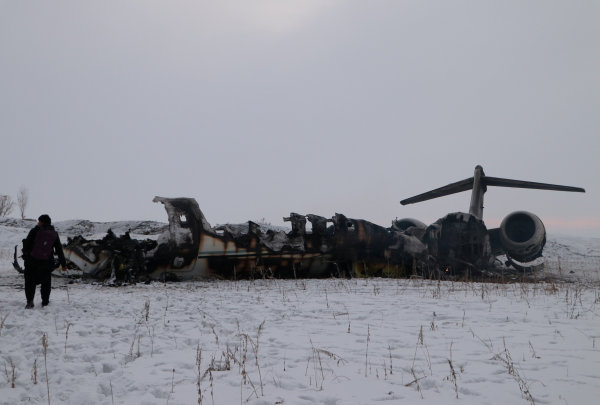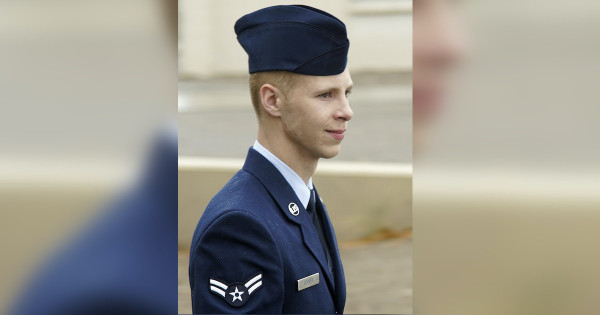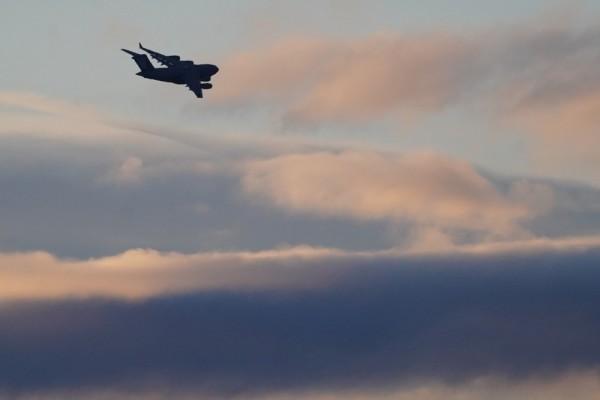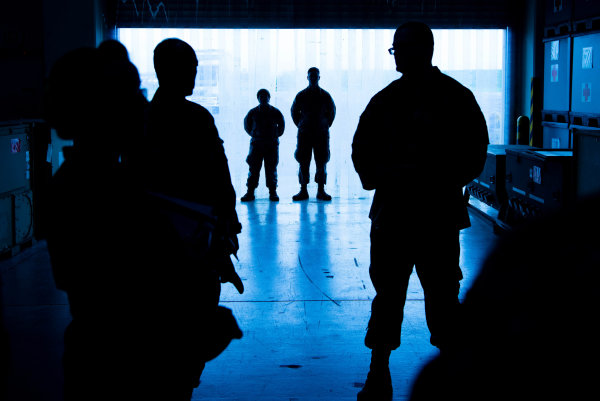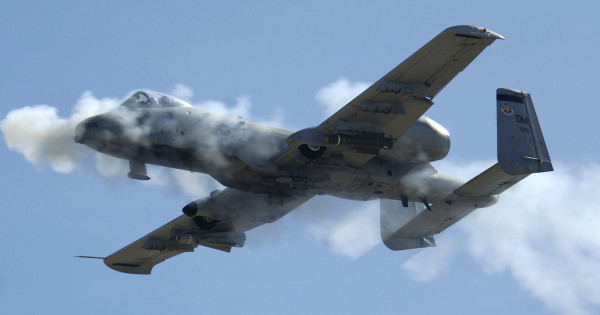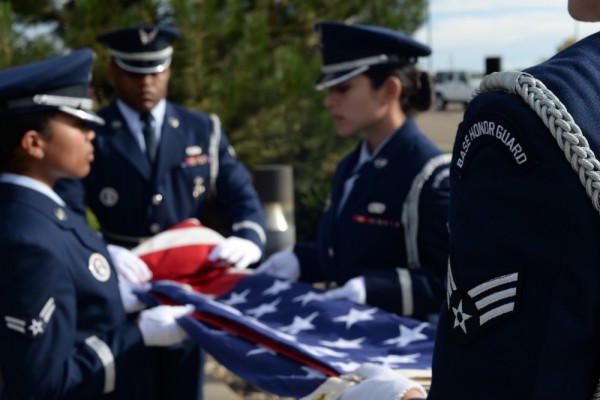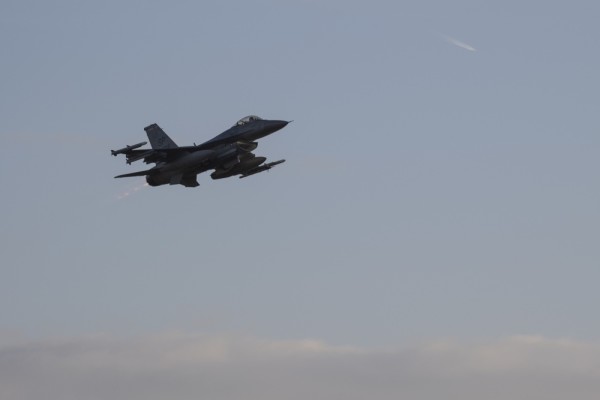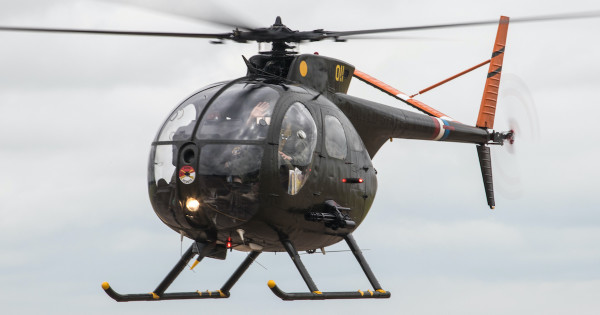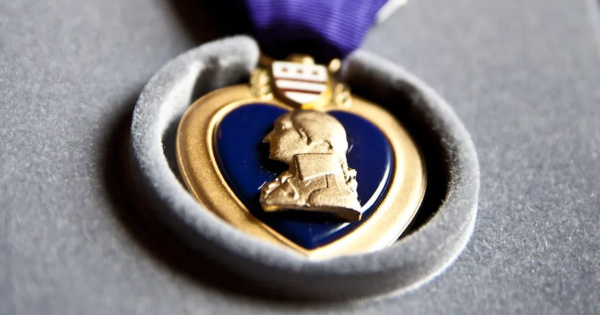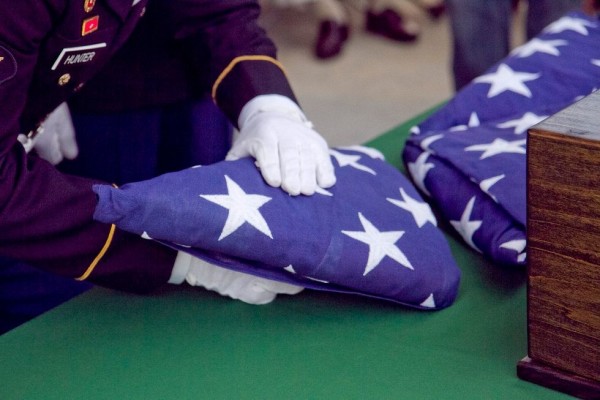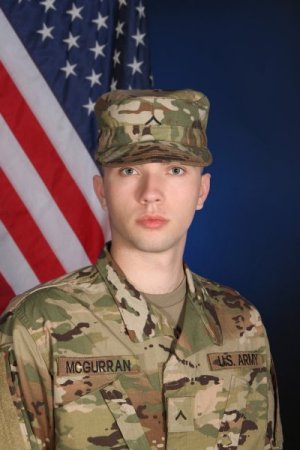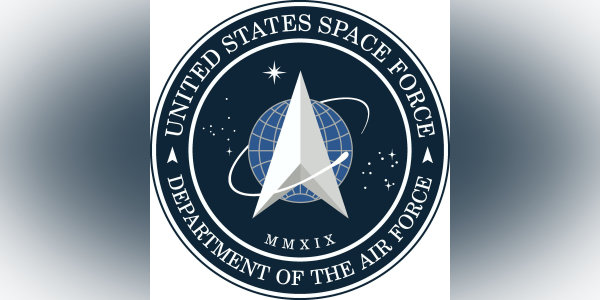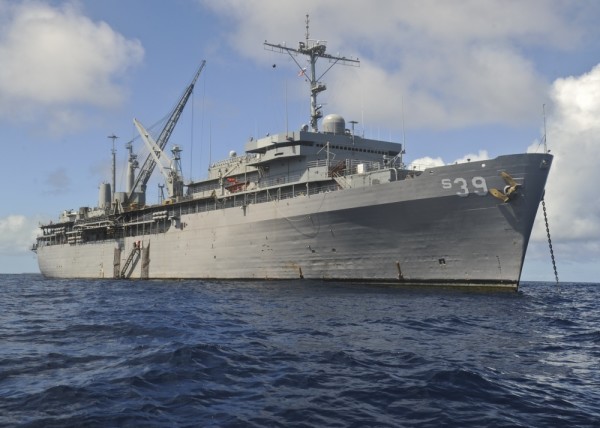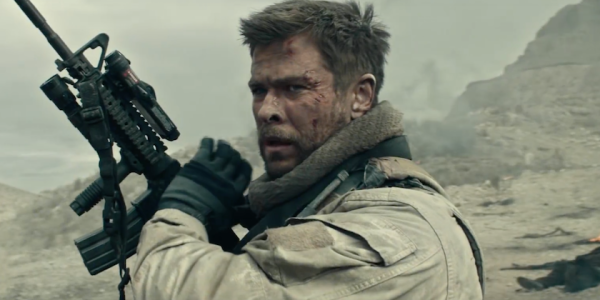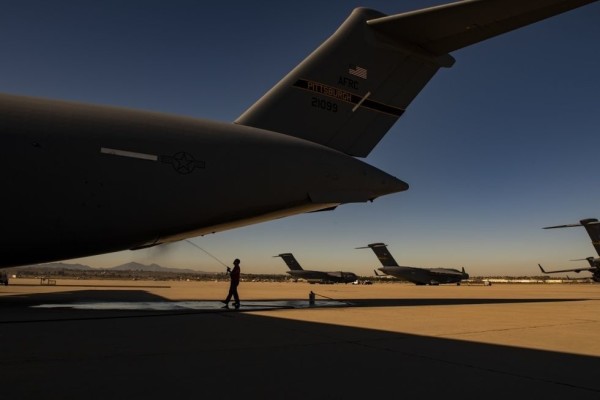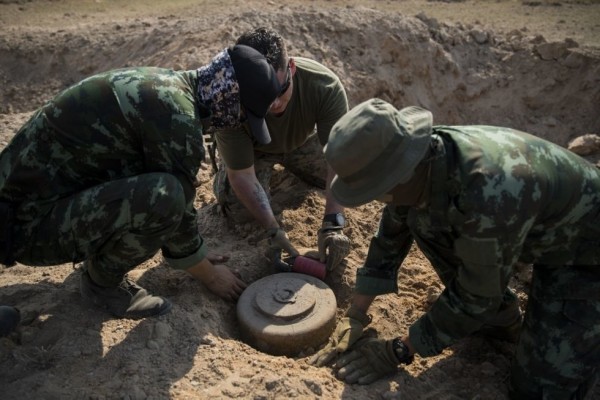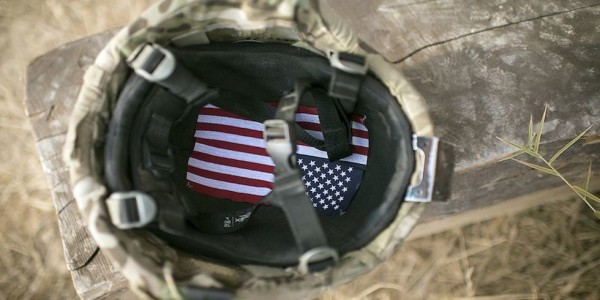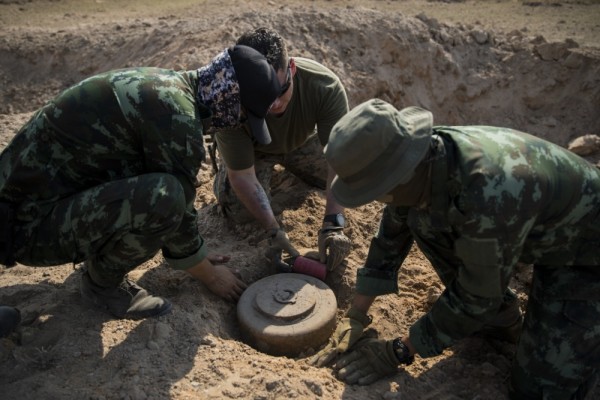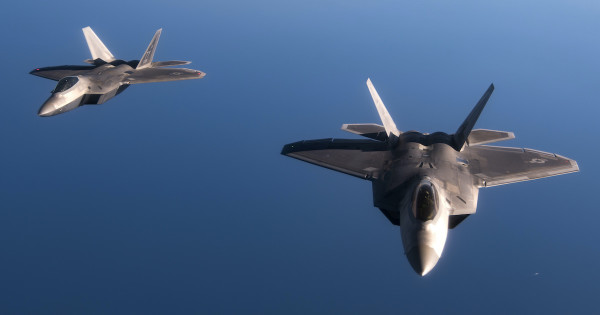The name Joe O’Keefe might not ring a bell for you, but he may be one of the deadliest men to have ever lived. Over the course of five days in 2001, the Air Force combat controller called in hundreds of airstrikes and 688,000 pounds (344 tons) of bombs on a valley in Afghanistan filled with Al Qaeda fighters.
The tonnage, more than twice that of the Statue of Liberty, still stands as the most dropped by “a single CCT, or anyone else, during an engagement in the history of airborne warfare,” wrote retired Air Force special operations officer Dan Schilling in his book “Alone at Dawn: Medal of Honor Recipient John Chapman and the Untold Story of the World’s Deadliest Special Operations Force.”
Combat controllers are special operations airmen whose job is to bring in air support and coordinate air traffic for other special operations troops such as Navy SEALs, Army Special Forces, British SAS, or, in O’Keefe’s case, a CIA team sneaking into the mountains surrounding the cave complex of Tora Bora, on Afghanistan’s eastern border with Pakistan.
It had been less than three months since the terrorist attacks of Sept. 11, 2001, and the CIA team was part of a larger effort to capture or kill Osama bin Laden, the founder of Al Qaeda, the group which carried out the attacks. The Americans heard that bin Laden was in Tora Bora, and it was up to O’Keefe, a Delta Force operator named Dan, and two CIA officers to scout it out.
“The chief of base looks over me and my two counterparts and says ‘isn’t this what you do?’” O’Keefe recalled CIA station chief Gary Bernsten asking him and a few other special operators. “We’re like ‘fuck yeah, every day and twice on Sunday.’”

On Dec. 3, 2001, the small team made their way into the mountains surrounding Tora Bora with the help of the Northern Alliance, a group of anti-Taliban fighters allied with the U.S. When they clambered out of the Northern Alliance truck, clad in Afghan garb and hats and wielding AK-47s, they then had to climb through the thin, cold alpine air to higher ground where they could set up an observation post.
From there, the team could see caves, trenches, spider holes and bunkers dotting the Milawa Valley of the White Mountains. O’Keefe estimated there were hundreds, if not a thousand enemy fighters there, against just four Americans. Luckily, they had the element of surprise.
“We had snuck into their back door,” O’Keefe said. Tora Bora was a stronghold that the Taliban had used back in the Soviet invasion during the 1970s and 1980s, so “they never thought the Americans could come to them there,” he recalled.
Of course, surprise was not the only thing on their side: they also had the might of dozens of the best pilots in the world flying overhead in some of the most advanced airborne killing machines known to man. O’Keefe’s menu of destructive options included B-1 and B-52 bombers, F-16, F-15, F-14 and F/A-18 fighter jets; and at least one Predator drone. The aircraft were equipped with precision-guided JDAMs, Maverick missiles, 500-pound Mark 82 bombs, 20mm cannons, and a 15,000-pound BLU-82, one of the largest conventional weapons ever used.
“I’m always thankful I was on this team and not their team,” O’Keefe said, “because the advantage was severely tilted in our favor.”

There was a reason the CCT and his team had so much firepower. During their mission, a friendly fire incident took place elsewhere in Afghanistan. The incident prompted military leadership to put a temporary ban on U.S. aircraft bombing other parts of the country. However, they made an exception for O’Keefe, who, as a CCT, was extremely well-trained in calling in airstrikes and keeping air traffic organized. O’Keefe was also surrounded by enemy fighters, close to Osama bin Laden, and without any friendly forces nearby, which meant the risk of friendly fire was very low.
As a result, nearly every aircraft with weapons in Afghanistan was sent to Victor Bravo two, the callsign O’Keefe and his team were using, Schilling wrote in his book. In fact, some pilots volunteered to do it, said O’Keefe, who had one ear tuned to the Airborne Warning and Control System (AWACS) aircraft flying overhead.
“I heard fighters checking in with AWACs over my tactical radio and AWACs was like ‘we want you to go over to this callsign,’ and the pilots were like, ‘negative, negative, we want to go do Victor Bravo two,’” the CCT recalled. “We were doing it. Business was good. And I’m sounding pretty macho right now but at the time it was a tenuous situation.”
Still, even with all that back-up, O’Keefe was just one man in a small team of four surrounded by enemy fighters. His pulse was racing as he sent in his first strike, a two-ship formation of F-14s armed with 2,000-pound GBU-10 bombs, to destroy an Al Qaeda bunker.
“My heart was pounding. I can see the AQ guys right out in front of us,” O’Keefe said in Schilling’s book. “I cleared them hot and the bomb dropped right in the position.”

‘That’s what combat controllers are great at’
There was no time to celebrate. While the smoke was still lingering over the destroyed enemy bunker, O’Keefe was already on the radio to line up the next attack. It’s a demanding task. Combat controllers are trained to not only guide in ordnance, but also to keep the aircraft overhead from running into each other, all while keeping track of what’s happening on the ground.
“I’ve got multiple radio nets going simultaneously: one for friendly forces on the ground, a satellite for AWACS, and a tactical frequency for speaking with bombers and fighters,” O’Keefe said.
To make things more complicated, airplanes arrived on station with a wide range of ordnance and fuel left in their tanks. A Navy F/A-18 fighter jet with Maverick missiles coming all the way from an aircraft carrier in the Persian Gulf may have only 11 minutes of playtime and be good for hitting enemy armor, O’Keefe said. Meanwhile, a B-52 bomber loitering overhead may have airburst bombs that can kill plenty of people out in the open, but not when they are hunkered down in a bunker.
To organize his airspace, the CCT stacked his jets up in thousand-foot intervals above him. At one point, he had 21 stacks reaching up into the skies.
“If I needed a specific weapon, they would come out of this stack, basically like chutes and ladders,” he said. “They would be flying in an orbit at their prescribed altitude, then come out to this initial point, then fly to that specific target. Once we were assured they were aimed at the right target, we would clear them hot.”



Calling in an airstrike may have the effect of Zeus throwing down a thunderbolt, but the process of doing it is less dramatic. To call in a strike, combat controllers use what’s called a nine-line: nine standardized lines of information that relay where the target is, how the aircraft should get there, what the target looks like, its elevation, how it will be marked, where friendlies are located, and other things of that nature. One of the choices CCTs have to make is what type of ordnance to use, and O’Keefe soon learned which ones worked best.
“That’s where we started to develop tactics to get bad guys out of the caves,” he said.
For example, JDAMs have three types of fuses: airburst, where the bomb detonates midair; point detonation, where it explodes upon contact with something; and delayed, where it detonates shortly afterwards. O’Keefe figured out the right time to cut the delayed fuse so that the JDAM cut through a mountain and detonated inside the cave.
“If you’re hiding in the cave entrance and the bomb goes off above and around you, you’ll feel some impact, some pressure, but you probably won’t get hit by the shrapnel, which is the desired effect,” he said. “We started using the JDAMs to route those guys out of the caves.”
Though delayed-fuse JDAMs worked best with caves, the Maverick missile worked well for destroying enemy armor. The enemy fighters in Milawa Valley had access to BMP armored troop carriers and T-62 tanks, one of which started rolling towards O’Keefe’s position with its gun leveled right at them. Luckily, the CCT had a B-52 on station, which O’Keefe used to drop a bomb on the tank, knocking the treads off and half-burying it in dirt. But it wasn’t dead yet.
“All of a sudden this thing starts rocking back and forth trying to get out of this buried position,” the CCT recalled. “So we’re like ‘holy shit, this guy’s like Jason from the damn horror movies.’ He’s not giving up.”

The Americans needed something more powerful, so they brought in a F/A-18 jet with a Maverick missile. Though O’Keefe had never trained with the weapon, he was impressed with the results.
“It comes off the rail and goes supersonic. You get a sonic boom, it hits that tank and there was nothing left of that thing,” he said. “It was so violent, there was nothing left bigger than your car door. It just decimated it.”
‘We’re professional soldiers’
When O’Keefe and his team first arrived in the mountains, they thought they would only stay for a one-night peek at the valley. But when they saw hundreds of enemy fighters, Gary Bernsten, the CIA station chief, told them to start dropping bombs for as long as possible. The result was a total of five nearly non-stop days of calling in airstrikes, clearing out enemy positions, moving deeper into the mountains, then doing it all over again.
“They would stack up rocks into bunkers and we would systematically remove those for them,” O’Keefe said. “We went over 72 hours where we were either moving or fighting, daylight to night, daylight to night.”
Some sights stood out amidst the destruction. The CCT remembered calling in an airstrike from a B-52 on a cave entrance from which a DShK — a Soviet-era heavy machine gun — had been firing at him, silencing it forever. He remembered wiping a group of seven enemy fighters off the face of the Earth with a 500-pound bomb; and he remembered the way the airstrikes reduced the trees to firewood. But despite their god-like power of destruction, O’Keefe and his team never felt a god complex.
“We were hiding, so never once did we woo-hoo or high-five each other,” the CCT said. “Part of what’s being in a special mission unit is these are mature operators. Everybody’s at least 30-something years old, married, we’ve got kids. You know, we’re professional soldiers.”

That sort of professionalism helps in a demanding operation like Tora Bora. For supplies, O’Keefe had only a one-quart Nalgene water bottle, one Meal-Ready-to-Eat and a couple spare batteries for his radios. The CCT in particular had to stay awake nearly the entire time because he was the only one on the team trained to call in so many airstrikes and coordinate the crowded airspace. But somehow he never felt fatigued.
“In combat you’re there to do your job: there are people trying to kill you, the adrenaline is flowing,” he said. “I had no issue staying up, I never felt tired. Somehow, magically my batteries never died, which blows me away because batteries are susceptible to die in the first 12 hours.
“I don’t want to get too corny here, but it’s almost like we were being very well looked after,” he added. “Like somebody had this in mind that we were going to be protected. It was bizarre.”
It also helped that the combat controller had three highly trained and experienced operators with him.
“I’m not the only show in town,” he said. “These guys helped defend me, they were pointing out targets, they were helping me with the terrain sketch … I couldn’t have done what I was doing without the teammates who were with me.”
Luckily, the small team would not be alone forever. After a few days, a Green Beret team with another CCT showed up and got into position on the other side of the valley. O’Keefe and the other CCT, Bill White, divided the terrain between them and kept hitting enemy positions, trying to nail Osama bin Laden. But though they killed hundreds of his followers, they could not reach the man himself.
“The CIA had pinpointed the Al Qaeda leader’s transmitter only 1.8 kilometers in front” of O’Keefe’s position, Schilling wrote. “But that was as close as the ill-equipped team got.”



On Dec. 8, after dropping 688,000 pounds of bombs on the enemy, O’Keefe and his team were exfiltrated to Jalalabad. Delta Force soldiers continued to hunt bin Laden, but O’Keefe’s part in the fight was over. It must have been a weight off his shoulders knowing he’d done his best.
“It was humbling and an immense responsibility simultaneously,” the CCT said. “We were doing what we were doing, and on the backside, we were hearing from Gary Bernsten, saying ‘hey keep it up the president’s getting sit-reps on this minute by minute.”
Did he have regrets about not getting Bin Laden? Not really.
“I don’t think much about ‘should I have done more.’ I thought we had done it, I was like ‘we did it.’” O’Keefe said. “We killed a lot of people. Hundreds of people. They had chosen their course, we had chosen ours, that’s the nature of it. I hope someday we get to heaven and get to be forgiven.”
‘That’s how I look back on it.’
O’Keefe went on to do a few more missions in Afghanistan before being sent to Iraq, where he took part in the 2003 invasion. After that, he coordinated air support on clandestine missions in the Arabian Gulf, and while he shot a few Hellfire missiles off Predator drones, O’Keefe never called in nearly as many airstrikes as he did that day in 2002.
“A lot of it was just the duration,” he said. “Typically special operations missions are really short,” rather than an entire week.

O’Keefe retired from the Air Force in 2004, and he went on to work in cybersecurity for the Department of Homeland Security. But that battle in Tora Bora still comes up from time to time. In particular, O’Keefe said high school kids in the U.S. Air Force Academy wrestling camp, where he taught a leadership class, would often ask how he reconciles what he did that week with his faith as a Christian.
“I used to say that the Bible is full of verses that talk about smiting your enemy. And I believe I did it with honor and integrity,” said O’Keefe. “The country called, and I was the right guy at the right place at the right time. I did it as effectively as I could and I will bear with that feeling.”
Looking back to that moment when they climbed atop that mountain range at Tora Bora, O’Keefe stressed that the terror attacks of Sept. 11, 2001 were still fresh in their minds, as was their mission: to hunt down those responsible.
“Sept. 11 is fresh, and these Al-Qaeda types were the ones that figured it out,” O’Keefe added. “So it’s like ‘oh, Bin Laden is right there?’ I didn’t need any motivation to do it.”
In the end, he was an airman in a fight with a job to do.
“I’m no different than any other combat controller,” he added. “Looking back on it, I was thankful to be the guy who just happened to be there … I was with the best guys I could ever possibly be with, and that’s how I look back on it.”
More great stories on Task & Purpose
- Air Force combat controller breaks down that wild desert airstrike scene from ‘Transformers’
- The insane heroism of Medal of Honor recipient John Chapman is getting a movie
- Putting warheads on foreheads — This is the gear Air Force combat controllers carry into battle
- The most experienced A-10 pilot in history explains how to be ready for anything
- ‘A vessel of hope’ — Air Force C-17 crews exhausted but proud after largest airlift in US military history
- Air Force special operators go from firefights to firefighting in California
- Watch this Air Force team do push-ups at 20,000 feet
Want to write for Task & Purpose? Learn more here and be sure to check out more great stories on our homepage.

